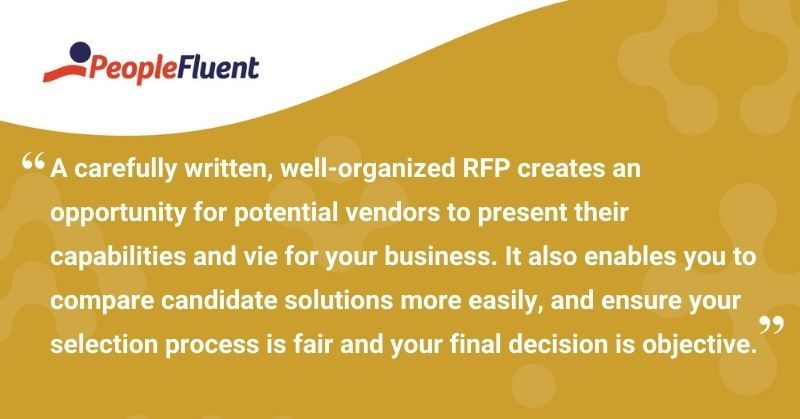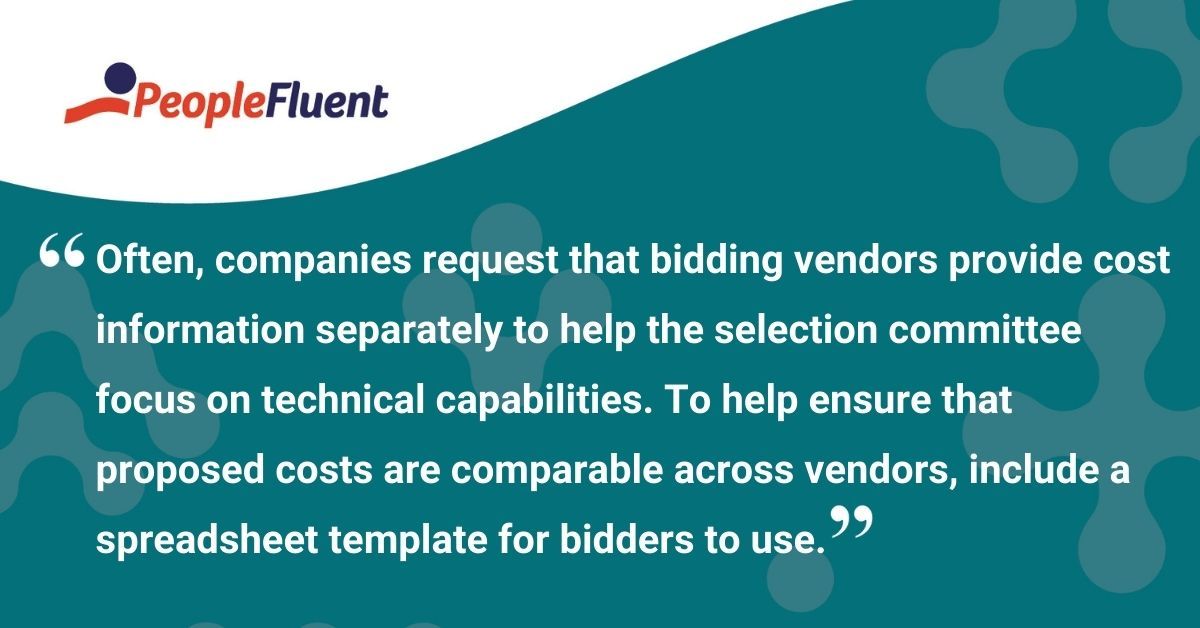Published: Apr 5, 2021Time to read: 4mins Category: Learning
How to Write an Effective RFP for a Recruiting Solution
"I love writing RFPs!" Said no one ever... And yet, the Request for Proposal (RFP) remains the best approach for selecting enterprise software. If you’ve been tasked with finding new recruitment technology for your organization, it’s time to embrace the challenge. And maybe get a little help. Here's how to do it.
Why Do I Have to Write an RFP?
The purpose of an RFP is to document your requirements and ensure your next Applicant Tracking System (ATS) offers the advanced features and functions you need to optimize your hiring process, recruit efficiently, and win top talent.
A carefully written, well-organized RFP is the key to a sound technology decision. It creates an opportunity for potential vendors to present their capabilities and vie for your business. And it enables you to compare candidate solutions more easily, and helps ensure your selection process is fair and your final decision is objective.
It also enables vendors who cannot meet your needs to self-select out of the process, which saves time for everyone involved. And it gives the remaining vendors clear instructions for their proposals.

READ THIS | '6 Ways to Choose the Right Applicant Tracking System for Your Organization'
The Unsung Benefits of Writing an RFP for Talent Acquisition Technology
Done well, the exercise of creating an RFP can work wonders. How, you ask?
Well, before your selection team can document requirements for hiring workflows, user experience, candidate experience, employer branding, data integrations, or recruiting metrics reports, they’ll have to talk to a lot of people. This includes recruiters, hiring managers, HRIS/HRIT leads, and HR leadership.
Every stakeholder in the recruiting, hiring, and onboarding process should contribute to the requirements gathering phase and that alone will spark collaboration, understanding, and perhaps even enlightenment as to how hard your talent acquisition team works.
NEXT UP | '5 Keys for Building an Employer Brand to Attract and Retain Quality Candidates'
Outline of an Effective RFP
So what should you include in an RFP for your next recruiting solution? Here’s an outline that captures everything you need:
- Overview of your organization and need for recruiting software
- IT and system specifications
- Required or desired system features
- Information required from vendors:
- Company overview, including financial viability, market share, strategic partnerships, industry leadership, number of employees, years in the business
- Description of solution, including standard and optional features, functions, and modules
- Other talent solutions offered and any benefits of bundling those solutions
- Product roadmap for the next 1-5 years
- Customer base and retention rate
- Representative clients within your industry
- Integration capabilities with your HCM, HRIS, or other systems
- Support model
- Solution architecture
- Technology security and data protection
- Customer references
- Implementation approach and timeline
- Cost proposal, including all licensing fees, training, customer support, and implementation
- Instructions and deadline for submitting proposals
- Selection criteria
- Point of contact for questions.

What about the Cost Proposal?
Often, companies request that bidding vendors provide cost information separately, to help the selection committee focus on technical capabilities. To help ensure that proposed costs are comparable across vendors, include as part of your RFP a spreadsheet template for bidders to use.
How to Manage Vendor Proposals
Solution providers will respond to your RFP according to the schedule you define, which should include a period during which bidders can ask clarifying questions to ensure their proposals are responsive to your company’s needs.
Share all proposals with your full selection team and give them time to thoroughly review each one. If you can, eliminate any vendors at this stage based on ability to meet your specifications, cost, or other objective criteria.
HAND-PICKED FOR YOU | '4 Secrets for Efficient Recruiting'
Finding the Right ATS Is Worth the Effort
No one ever said writing a good RFP was easy. But the time you spend compiling your requirements and assembling a clear set of instructions for recruiting solution providers is worth the effort.
Not only will you streamline the selection process downstream, you’ll also ensure that the solution you choose will suit your unique hiring process and workflows.
And that’s the key to building a skilled, innovative, and diverse workforce—bringing your company’s talent and business strategies to life.
Discover How Recruitment Lets You Find the Right People—Fast
PeopleFluent helps you fill critical roles with the right people and the right skillsets on a global scale. At the same time, it helps you build your employer brand and sharpen your competitive edge.